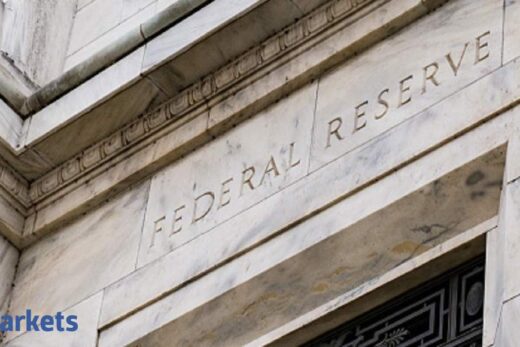One of the more important parlor games macroeconomists and Wall Streeters are playing is guessing when the Federal Reserve will finally stop keeping long-term interest rates at historically low levels.
The Fed’s policy, which began in the wake of the 2008 financial crisis, even has a name: quantitative easing (Q.E.), Fed-speak for when the central bank goes into the market, month after month, to buy Treasury bonds, mortgage-backed securities and other forms of long-term credit to drive up the price of these securities and lower their yields. In effect, this keeps long-term interest rates lower than they otherwise would be.
In the wake of the Great Recession and the onset of the Covid-19 pandemic in March 2020, that has proved to be an effective short-term strategy to kick-start the economy. But many people wonder if Jerome Powell, the chairman of the Fed, has reckoned with the power of the easy-money monster the central bank spawned all those years ago. They worry that Mr. Powell has helped inflate bubbles in housing, lumber, copper, Bitcoin and stocks, bonds and other assets. The evidence is mounting: The Consumer Price Index, a gauge of inflation, rose 5 percent in May from a severely depressed number a year earlier — the fastest rate in nearly 13 years. And that’s just one worrisome indicator.
It’s unclear whether the Fed has the will — or the ability — to end all this. Or if it even knows how to taper the bond-buying program without sending interest rates sky high, choking off the nascent economic recovery and freaking out everyone now addicted to low interest rates.
What happens when the easy-money monster gets too big to control?
The Q.E. numbers are staggering. In August 2008, a month before the acute phase of the financial crisis, the assets on the Fed’s balance sheet stood at nearly $900 billion. Shortly after the collapse of Lehman Brothers, which was liquidated after filing for bankruptcy in September 2008, the Fed’s bond-buying program kicked into high gear. By January 2015, the assets on the Fed’s balance sheet had exploded to $4.5 trillion.
For the next five years, the Fed fine-tuned its strategy while slowly reducing its bond buying in preparation for a post-Q.E. world. But starting in March 2020, as the economic impact of the pandemic started to become clear, the Fed doubled down on its bond buying: Its balance sheet exploded to nearly $8 trillion in assets by June 2021. Now the Federal Reserve Bank of New York predicts that the Fed’s balance sheet could hit $9 trillion in assets by 2022. That’s a policy expansion — not a contraction.
Low interest rates are everywhere. The yield on the seven-year Treasury bond is 1.16 percent, and the Treasury can borrow money for 30 years at an annual cost of just 2.15 percent, as of last week — historically low borrowing costs, brought to you by the Fed. Like floodwaters, low interest rates trickle into nearly every nook and cranny of the credit markets. In February 2020, before the Fed recommitted to Q.E., the average yield on a junk bond (bonds issued by companies with less than stellar credit) was around a historically low 5 percent. As investors reacted to the pandemic, junk bond yields spiked, reaching 11.4 percent in a month; this spike reflected the rapidly rising concerns about widespread credit defaults, bankruptcies and increasing risk. But after the Fed announced its springtime rescue plans and resumed its high-powered bond buying, including of junk bond funds, bond prices soared. Interest rates soon returned to their artificially low levels. The average yield on a junk bond dipped to its lowest ever, just under 4 percent, in February 2021. It remains very low, around 4.1 percent.
Anyone borrowing money in this country — that’s an awful lot of people — prefers low interest rates. There’s the federal government, which owes creditors more than $28 trillion. Every day, according to the Peterson Foundation, the government spends nearly $800 million on interest to service the growing federal debt. Corporations also love low interest rates: They make borrowing money cheap and thus corporate profits plentiful. The cost of a home mortgage remains historically low.
Who, then, hates low interest rates? Investors, along with people who live off their savings. There is nowhere to turn to get a return on an investment without taking unjustifiable risks. And risk is being mispriced everywhere. For years, investors have plowed into the stock market because their assessment of the risk and reward ratio there made more sense than in the bond market. That trade paid off, at least early on in the Q.E. experiment.
But now the stock market is at all-time highs, too. What are investors to do in an era in which the Fed has manipulated interest rates to their lowest levels ever without any sign, or willingness, to change course? It’s no wonder manias abound, in meme stocks like Game Stop and AMC, in cryptocurrencies such as Bitcoin and Dogecoin, in the bizarre phenomenon of nonfungible tokens and in the crazy story of the $113 million deli in Paulsboro, N.J. There are few traditional — read: safer — places investors can turn to get the outsize returns they crave.
In a conversation at the Economic Club of New York, Lawrence Summers, a former Treasury secretary, and Glenn Hubbard, a former chair of the Council of Economic Advisers, expressed concern. Mr. Summers, who served in Democratic presidential administrations, has repeatedly voiced his worry that the combination of current monetary and fiscal policy will spur unwanted inflation — a worry affirmed by this month’s Consumer Price Index report. “Future financial historians will be mystified by why we were spending $50 billion a month buying mortgage-backed securities in the face of a housing price explosion,” he said. Mr. Hubbard, a former Republican official, said he did not “see an argument” for the Fed’s current approach “without telling the public what an exit path is going to be.”
So far, that exit path has not materialized. When asked in March if the Fed was “talking about talking about” ending Q.E., Mr. Powell said, “Not yet.” The next month, he reiterated that the time had not come. That sounds like a man facing pressure to maintain the status quo.
Of course, there’s a counterargument: that concerns about wild inflation are overblown and that it will take time to rebalance supply and demand equations after much of the world economy was shut down for more than a year. But that’s no rationale for again expanding the Q.E. program.
At some point, the years of excess in the financial markets will likely lead to a volcanic economic disruption. Capital markets will seize up, and debt and equity financing will be largely unavailable. Years of economic pain and turmoil will follow, with the worst of it, as ever, borne by those least able to handle its consequences. Just as in the aftermath of 2008, the blame will be diffuse.
But there are alternatives. Brian Deese, the director of the National Economic Council, should encourage President Biden to urge Mr. Powell to begin tapering the Fed’s bond-buying program and to keep doing it even after the markets have their tantrum. Ron Wyden, the chair of the Senate Finance Committee, could invite the survivors of the 2008 financial crisis to remind us how close we all came to the abyss last time. The Fed could make the decision to change direction on Q.E. at the Federal Open Market Committee meetings this week.
If not, we’ll scratch our heads in collective amazement that we again find ourselves in the midst of a financial crisis — a thoroughly avoidable one.



